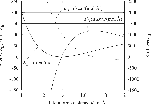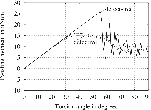
engineering & technology publications
ISSN 1759-3433
PROCEEDINGS OF THE TENTH INTERNATIONAL CONFERENCE ON CIVIL, STRUCTURAL AND ENVIRONMENTAL ENGINEERING COMPUTING
Stability Problems at Nanoscale
Institute for Structural Analysis, University of Hannover, Germany
 |
 |
| (a) Energy terms | (b) Bond stretch |
 |
 |
| (c) Angle bend | (d) Bond torsion |
This approach can easily be implemented in a finite element code for the benefit of efficient solvers and comprehensive pre-/postprocessors. Therefore a new four-node element has been developed which allows for the computation of atomic structures such as carbon nanotubes. The material parameters for this element can be directly taken from the well-proven DREIDING force field, see [2], which is a great advantage compared to standard finite elements. The robustness and efficiency of the presented algorithm and stability problems on the nanoscale will be shown in bending and torsion tests of carbon nanotubes, see Figure 135.2(a), with and without Stone-Wales defects, see figure 135.2(b). The results correspond to those known as stability failure at macroscale analyses.
 |
 |
| (a) Load-displacement curve | (b) Stone-Wales bond rotation |
There is considerable interest in carbon nanotubes due to their extraordinary mechanical, electrical, thermal and chemical properties since their discovery in 1991. They consist of hexagonal rings of carbon atoms and thus can be imagined as a rolled-up sheet of graphene, what makes them a shell-like structure at nanoscale. Many applications for carbon nanotubes are possible, where their use as fiber reinforcement in polymers, ceramics etc. is only one facet, see [1].
In short, this paper provides an introduction into the novel nanotechnology, presenting some theory and numerical results in this new and highly rewarding field of research. The authors believe that engineering new nanomaterials might become the only way to meet the essentially stringent demands for light weight, high strength structural components in the next generation of shell and spatial structures.
- 1
- P.M. Ajayan and O.Z. Zhou. "Applications of carbon nanotubes", In M.S. Dresselhaus, G. Dresselhaus, and P. Avouris, editors, Carbon Nanotubes, Topics in Applied Physics, volume 80, pages 391-425. Springer-Verlag, Berlin, 2001.
- 2
- S.L. Mayo, B.D. Olafson, and W.A. Goddard (III). "(DREIDING): A generic force field for molecular simlations", J. Physical Chemistry, 94:8897-8909, 1990. doi:10.1021/j100389a010
purchase the full-text of this paper (price £20)
go to the previous paper
go to the next paper
return to the table of contents
return to the book description
purchase this book (price £135 +P&P)